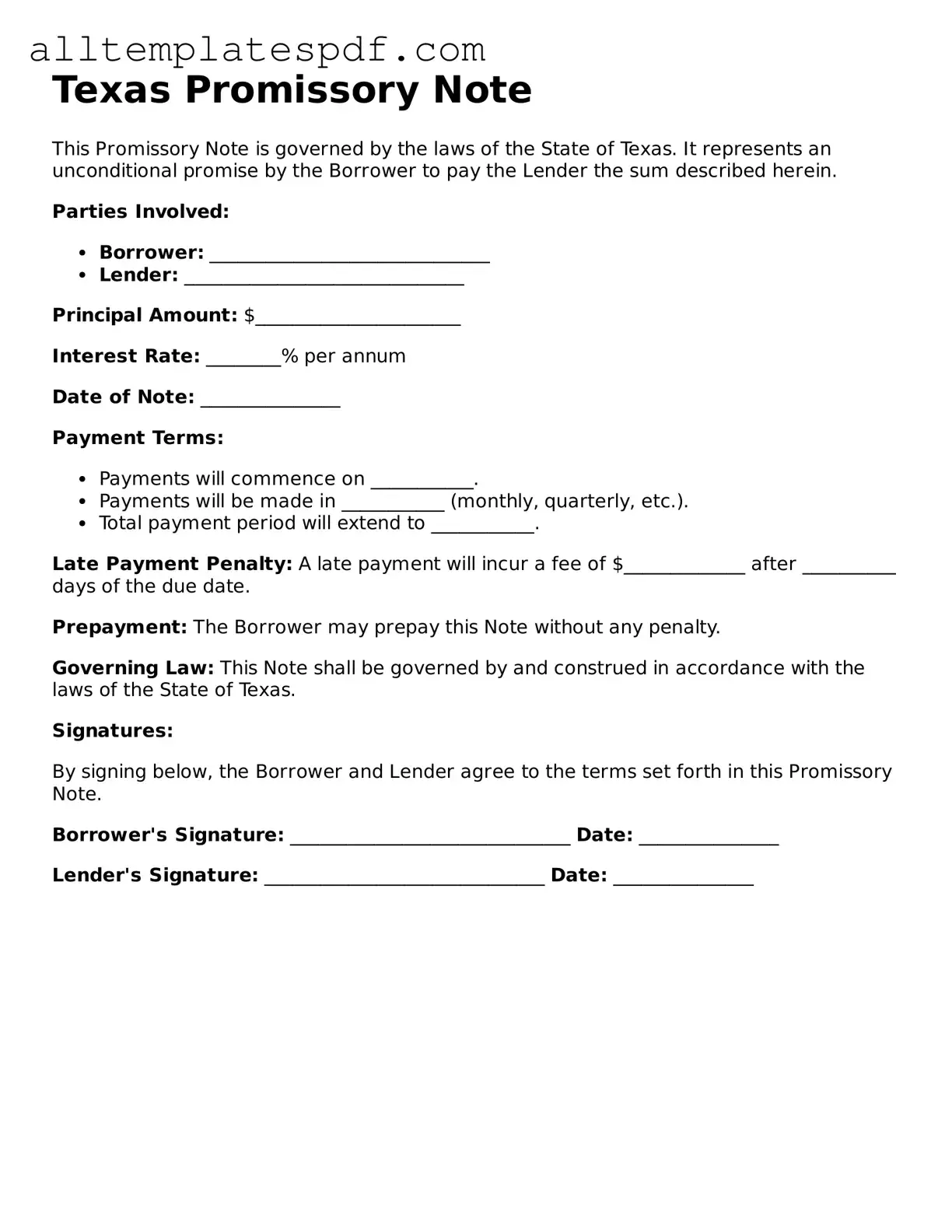Filling out the Texas Promissory Note form can be a straightforward process, but many individuals make common mistakes that can lead to complications. Understanding these pitfalls can help ensure that the document is completed accurately.
One frequent error is failing to include all necessary parties. It is essential to list both the borrower and the lender clearly. Omitting a party can create confusion and complicate the enforcement of the note.
Another mistake is not specifying the loan amount. The total amount borrowed should be clearly stated to avoid disputes later. Ambiguities regarding the amount can lead to misunderstandings between the parties involved.
Many people also overlook the interest rate. If the note includes interest, the rate must be clearly defined. A vague or missing interest rate can result in legal challenges and financial discrepancies.
Additionally, incomplete payment terms are a common issue. The schedule for repayments, including due dates and amounts, should be explicitly outlined. Without this information, it may be difficult to enforce the terms of the agreement.
Another area of concern is neglecting to date the document. A date is crucial for establishing the timeline of the agreement. Without it, there may be confusion regarding when the loan was initiated.
Some individuals fail to sign the document. It is vital for all parties to sign the promissory note to validate the agreement. A missing signature can render the document unenforceable.
Moreover, not having a witness or notarization can be problematic. While not always required, having a witness or notarizing the document adds an extra layer of authenticity and can help prevent future disputes.
Another common mistake is using unclear language. It is important to use straightforward language to avoid ambiguity. Legal terms or overly complex wording can lead to misunderstandings and complications.
Lastly, failing to keep copies of the signed document is a mistake that can have serious consequences. Each party should retain a copy for their records to ensure that everyone has access to the agreed-upon terms.
By being aware of these common mistakes, individuals can fill out the Texas Promissory Note form more effectively, reducing the likelihood of future issues and ensuring a smoother lending process.
